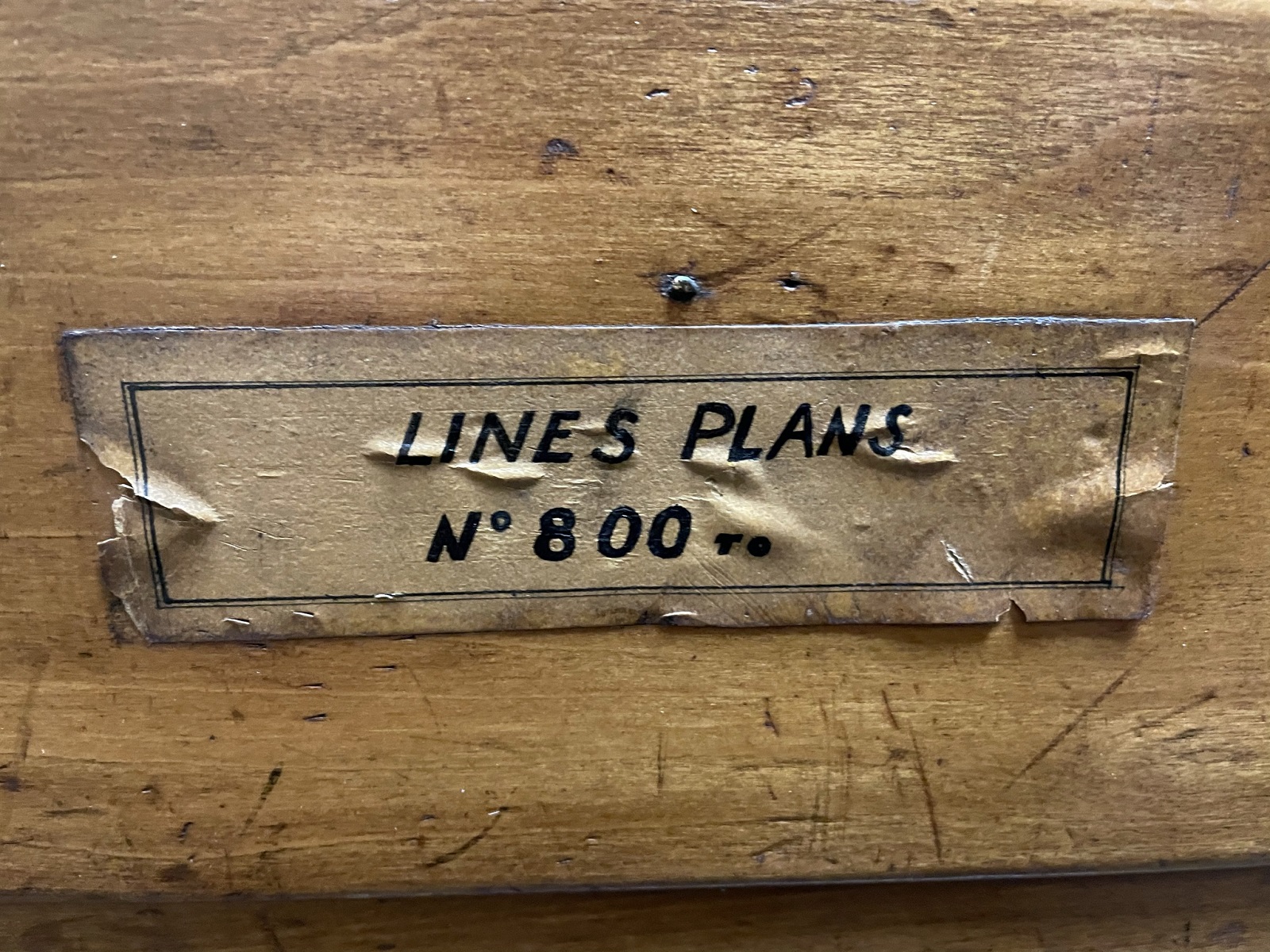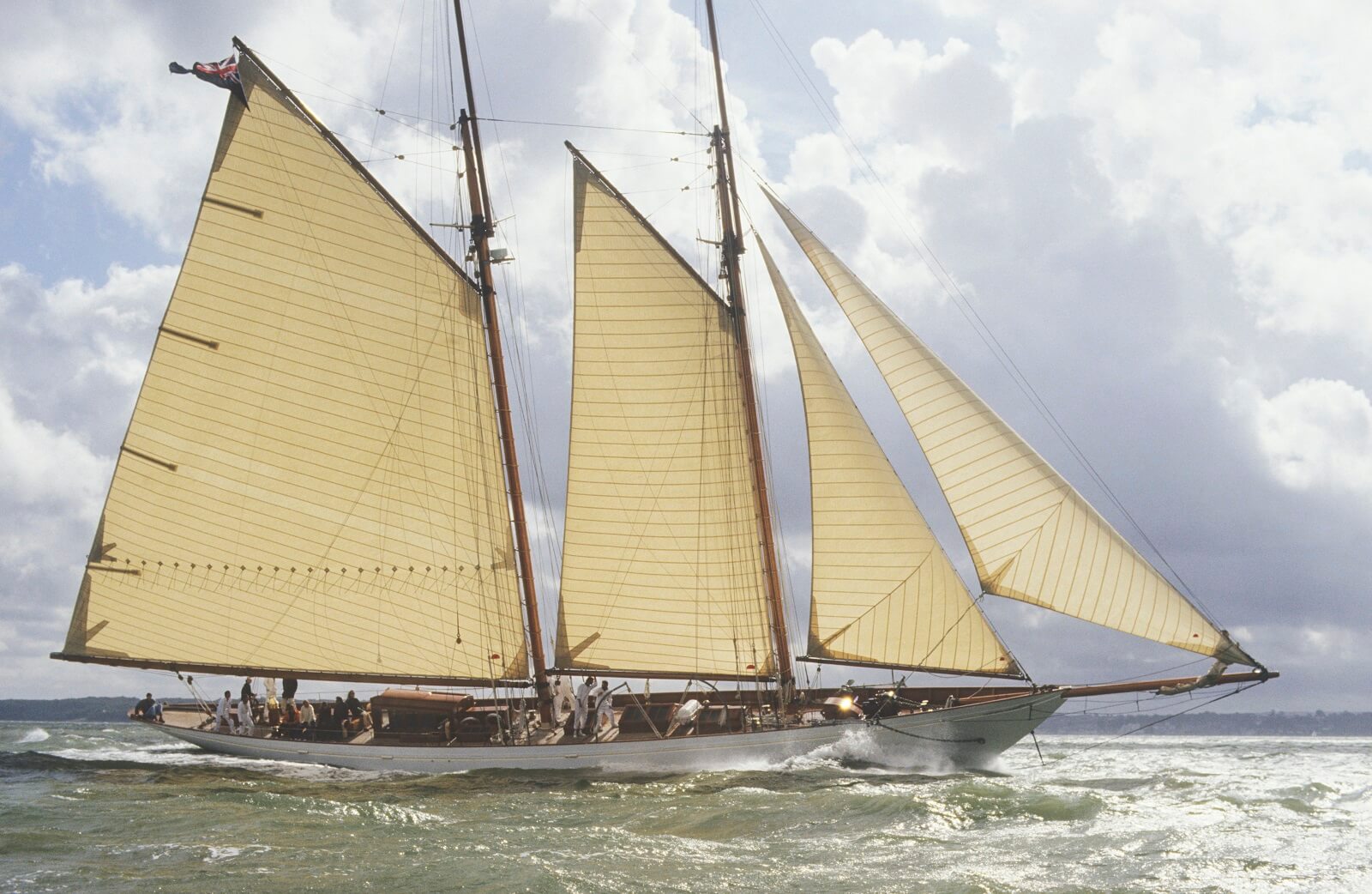
The carved dragon has become an iconic symbol of the Fife yachts.
The Fife Design Archive was stored in the yard’s drawing office. Wooden plans chests formed the base of the draughting tables where the drawings were produced. The drawings were not filed by yacht, but by type. Thus, there were series of drawers for Lines Plans, Sail Plans, Accommodation Plans, Mid-Ship Sections etc. Latterly these were all arranged by yard number.
The origins of the yard numbering scheme remains a subject that needs further investigation, however it is clear that designs were being produced long before it was introduced. From the poor survival rate of William Fife II’s drawings it is evident that at some point these must have been disposed of in an office clear out. We cannot be sure when this would have been but noting that the yard was able to produce new drawings of the lines plans of Gleam of 1832, Cymba of 1852, Fiona of 1865 and other early yachts in the 1930s it seems likely that these older drawing survived until at least then.

Labels from a surviving plans chest from the Fife drawing office.

In the Fife office drawings were stored by type not by yacht.
Despite the loss of this early part of the firm’s design archive, the surviving collection is remarkably intact from the 1880s onwards charting the careers of William Fife III and Robert Baldeston Fife as well as that of Archie McMillan who later took over the yard.
William Fife III left clear instructions in his will that his drawings be passed to Robert Balderston Fife and the collection lay undisturbed through the subsequent sales of the yard until 1984 when Archie McMillan sold the yard for redevelopment. Conscious of the importance of the design archive he moved the plans chests to a shed in his garden. With the plans chests pilled two high access was not ideal, nor were the environmental conditions, but the collection survived.
As Archie cleared out the old drawing office, he also sought to dispose of some plans which he judged less important, as well as files of specifications and correspondence. These drawings were intended to be only joinery details, spars and metalwork.The misfiling of drawings did however mean that some more important drawings were also discarded. Conversely many drawings intended for disposal were saved within the main collection. As to the material McMillan intended to dispose of, a timely and fortunate intervention saw this material rescued from the skip and transported to the Scottish Maritime Museum where it remains.

Archie McMillan who sold the Fife yard and then stored the archive in a shed in his garden.
During the years that the core collection remained in Archie’s garden shed it was an essential place of pilgrimage for anyone wanting to undertake an authentic Fife restoration. Leading amongst these were Fairlie Restorations Ltd established in 1989 by Albert Obrist. After Obrist brought the restored Altair to the Clyde to celebrate her 60th birthday in 1991 Archie agreed that he should be the next custodian of the archive and sold him the collection. It was then kept at Fairlie Restorations in Hamble on the south coast of England. With the management buyout of Fairlie Restorations in 2009, the archive passed to the care of a sister company Fairlie Yachts. In 2015, when this firm experienced financial difficulties, Ernst Klaus a concerned Fife yacht owner stepped in to safeguard the collection. In December 2020 the collection was acquired by Scottish Yachting Archives Ltd and moved back to Scotland.

The exemplary mid-1980s restoration of Altair drew the world’s attention to the beauty of Fife designs.